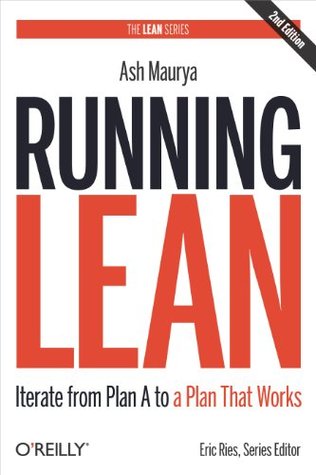More on this book
Community
Kindle Notes & Highlights
by
Ash Maurya
Read between
November 29, 2017 - December 19, 2018
The essence of Running Lean can be distilled into three steps: Document your Plan A. Identify the riskiest parts of your plan. Systematically test your plan.
It is important to accept that your initial vision is built largely on untested assumptions (or hypotheses). Running Lean helps you systematically test and refine that initial vision.
Stage 1: Problem/Solution Fit
Stage 2: Product/Market Fit
Stage 3: Scale
Achieving product/market fit is the first significant milestone of a startup and greatly influences both strategy and tactics. For this reason, it is helpful to
further delineate the stages of a startup as “before product/market fit” and “after product/market fit.”
Before product/market fit, the focus of the startup centers on learning and pivots. After product/market fit, the focus shif...
This highlight has been truncated due to consecutive passage length restrictions.
In a pivot experiment, you attempt to validate parts of the business model hypotheses in order to find a plan that works. In an optimization experiment, you attempt to refine parts of the business model hypotheses in order to accelerate a working plan. The goal of the first is a course correction (or a pivot). The goal of the second is efficiency (or scale).
The first two stages (Understand Problem and Define Solution) are about getting to problem/solution fit or finding a problem worth solving. Then you iterate toward product/market fit by testing whether you’ve built something people want using a two-stage approach: first qualitative (micro-scale), then quantitative (macro-scale).
I did nothing at first.
what would be different
unique value proposition
existing alternatives.
(problem statement)
(solution).
(early adopters).
building a demo.
riskiest part
(define the solution)
problem worth solving.
(channel testing).
(potential prospects),
(a minimum viable product).
(iterate in small batches).
(getting paid is the first form of validation).
iteratively,
early adopters
(right action, right time).
early traction,
(build a continuous feedback loop with customers).
A book, like large software, is never finished — only released.
When you first start out, all you have is an inkling of a problem, a solution, and maybe a customer segment.
List the top one to three problems.
List existing alternatives.
Identify other user roles.
Hone in on possible early adopters.
Be different, but make sure your difference matters.
Target early adopters.
Focus on finished story benefits.
Instant Clarity Headline = End Result Customer Wants + Specific Period of Time + Address the Objections
Pick your words carefully and own them.
Answer: what, who, and why.
Study other good UVPs.
Create a high-concept pitch.
Bind a solution to your problem as late as possible.
Freer versus paid
Inbound versus outbound
Inbound channels use “pull messaging” to let customers find you organically, while outbound channels rely on “push messaging” to reach customers.
Direct versus automated


